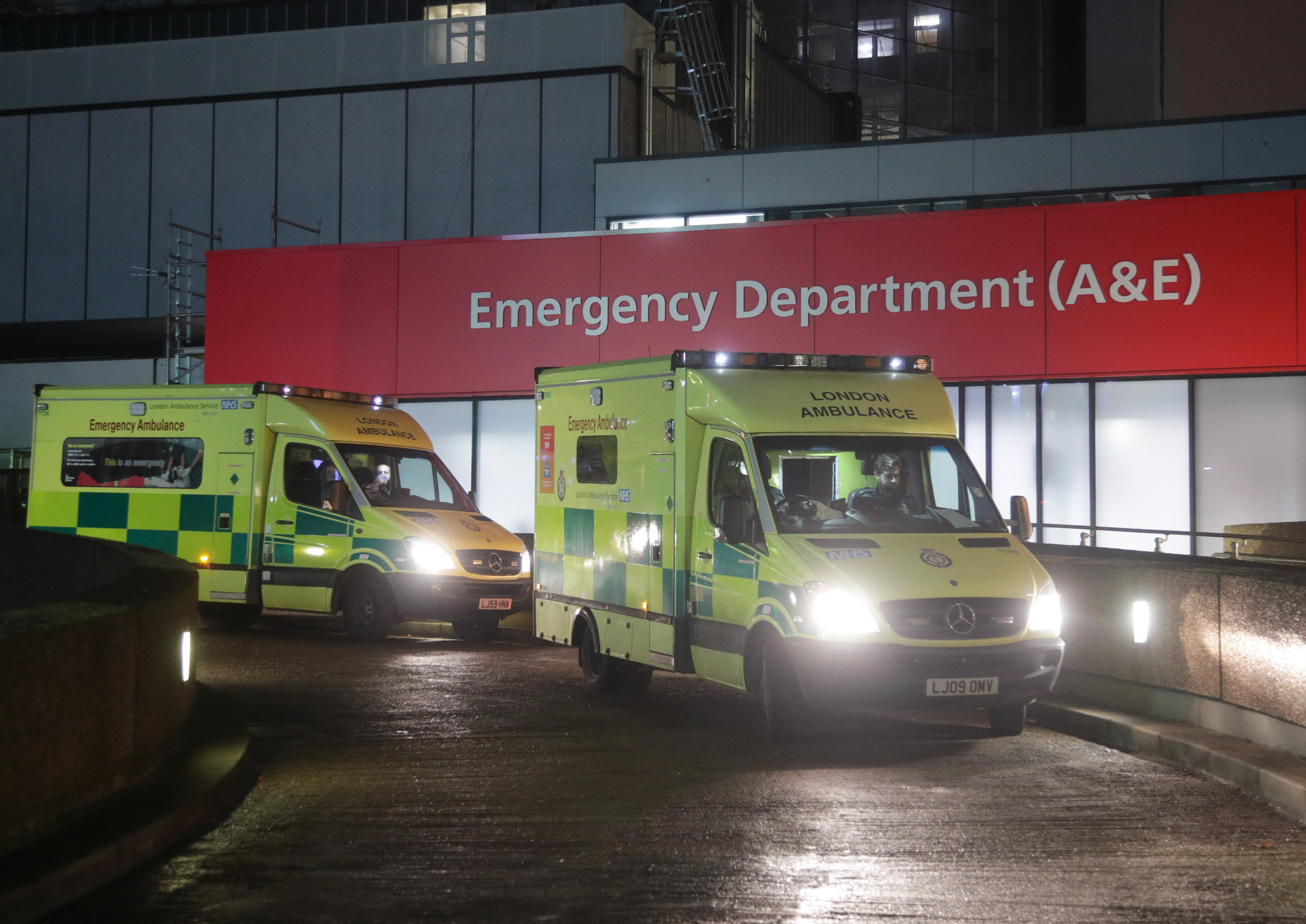Closing Walk-In Centres Could Heap Even More Pressure On A&E Units, NHS Data Reveals
The continued closure of walk-in centres could increase pressure on A&E departments already in the midst of a winter crisis, internal NHS data has revealed.
This is despite public claims from NHS trusts that closing walk-in centres will have a “minimal effect” on emergency wards.
A freedom of information request (FOI) seen by HuffPost UK has revealed the results of an investigation by the Pennine Care NHS Foundation Trust, which serves the Greater Manchester area, into the potential fallout of closing a centre in Bury.
 The trust found that between March 2013 and March 2016, 22% of the almost 99,000 patients who attended the centre in that time would have gone to A&E if the walk-in centre didn’t exist – even though just 0.04% had a medical problem that warranted doing so.
The trust found that between March 2013 and March 2016, 22% of the almost 99,000 patients who attended the centre in that time would have gone to A&E if the walk-in centre didn’t exist – even though just 0.04% had a medical problem that warranted doing so.
That would mean a potential 7,406 extra people every year seeking emergency treatment at A&E when it was only necessary in three cases.
The trust’s own estimate was that by diverting people away from A&E, the walk-in centre had saved them £938,432 in just one financial year.
Pennine Care NHS Foundation Trust told HuffPost UK: “We don’t have any plans to close our walk-in centres. There is currently a public consultation on the future of urgent care centres in Bury, which is led by the CCG [Clinical Commissioning Group].”
According to the campaigning group 38 Degrees, 95 of 238 walk-in centres in England have shut since 2010 – 40% of the total. It is unclear how many centres are currently in consultation to be closed, but 39 Degrees says in the last six months 70 units have been shut or downgraded. According to the most recent government figures, attendance at these centres has been growing.
“The government should call a halt to walk-in centre closures,” Labour MP James Frith, who submitted the FOI request, told HuffPost. “I do not think the government’s statement that closing walk-in centres won’t increase pressure on A&E departments is based remotely on reality or the will of patients.”
The government should call a halt to walk-in centre closuresLabour MP James Frith
Local NHS trusts criticised over their decisions to close these centres have claimed it will have a “minimal impact” on other services, including A&E departments.
“The NHS winter crisis is no accident, we’re seeing short-term political calculations compromising patient care up and down the country,” said Holly Maltby, a campaigner at 38 Degrees.
In Lewisham, south east London, the NHS trust is failing to meet waiting time targets in A&E, missing the standard by 10%, according to the latest trust review. Despite this, the Lewisham Clinical Commissioning Group (CCG) will close a walk-in centre in New Cross, south London, at the end of March. “Analysis has assured us this decision will have a minimal impact on local A&Es,” stated the trust in response to public criticism.
Our analysis has assured us that this decision will have a minimal impact on local A&Es. Our acute trust @LG_NHS are assured that this is the case too. We will monitor this following the closure of the Walk-in at the end of March
— NHSLewishamCCG (@NHSLewishamCCG) January 12, 2018
A report from NHS regulator, Monitor, states CCGs – the clinically-led bodies responsible for planning NHS services in local areas – are closing walk-in centres because they have not produced a dip in attendance at hospitals.
“One commonly-cited reason for closures is that the centres have not reduced A&E attendances,” said the report. It states that trusts believe they need to close centres because they are “paying twice” for a “duplication in services”.
But patients like Emma Dent, 42, from Ramsbottom, Bury, told HuffPost UK that she, like other patients in the Bury FOI data, would also seek alternative treatment at A&E if she did not have access to walk-in centres.
“I genuinely do not understand how CCGs think that walk-in centres being closed does not impact on A&E attendances,” Dent said. “If patients cannot get a GP appointment or do not have a GP, where else are they supposed to go?
Dent has previously used several walk-in centres around the UK for a variety of ailments, including a foot injury on Boxing Day, a mastitis infection and most recently for her daughter who had an ear infection.
 number of people using individual walk-in centres in England ranges from around 12,000 [for the smallest centres] to 60,000 [for the largest centres] every year, meaning the centre in Bury would fall in the mid-range. The closure of larger centres could then mean double the number of patients going to local A&E units.
number of people using individual walk-in centres in England ranges from around 12,000 [for the smallest centres] to 60,000 [for the largest centres] every year, meaning the centre in Bury would fall in the mid-range. The closure of larger centres could then mean double the number of patients going to local A&E units.
The closures also have the potential to adversely affect some demographics of patients more than others. The Monitor report says: “Evidence we collected suggests that walk-in centre closures, or possibly relocations/reconfigurations, can risk increasing health inequality if suitable alternatives are not put in place.”
 National Inclusion Health Board.
National Inclusion Health Board.
It can risk increasing health inequality if suitable alternatives are not put in place…”Walk-in Centre Review: Final report and recommendations
Speaking about the impact on general practitioners, Professor Helen Stokes-Lampard, chair of the Royal College Of GPs, told HuffPost it was essential that decisions were made for the benefit of service users and not just because of targets.
“General practice is facing intense resource and workforce pressures, and our patients are already waiting longer and longer for appointments, so it’s important that we do continue to explore and invest in new models of service provision that work for our patients, GPs and our teams, and the wider NHS,” she said.
You Might Like
